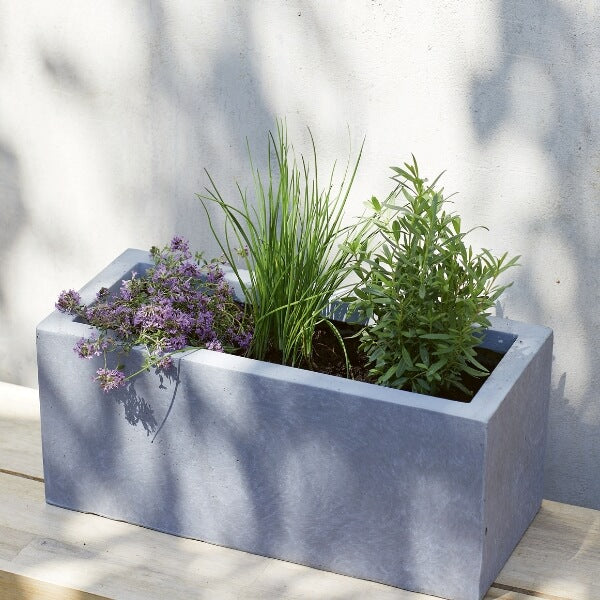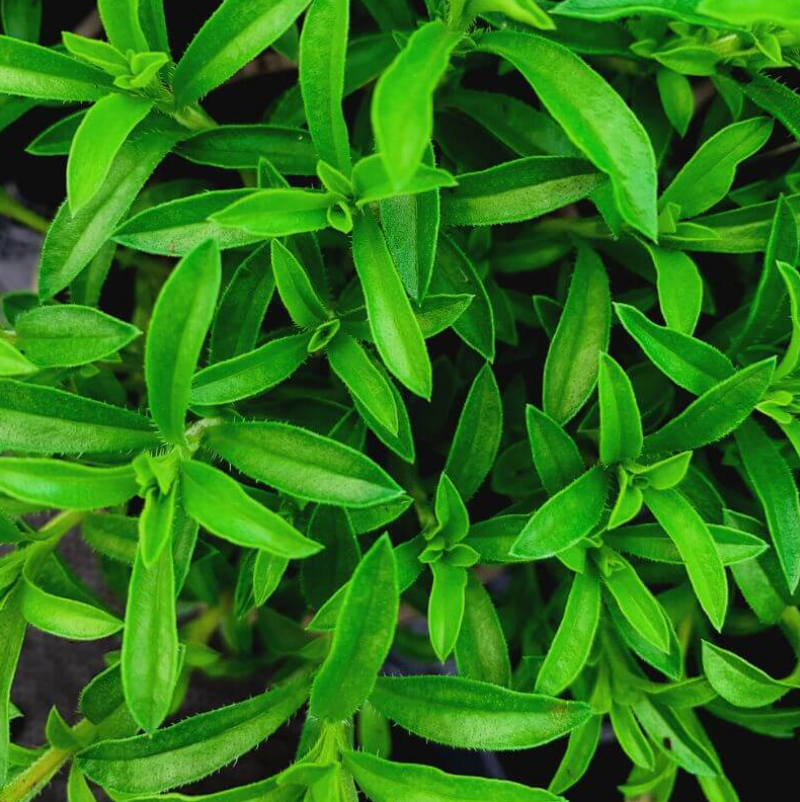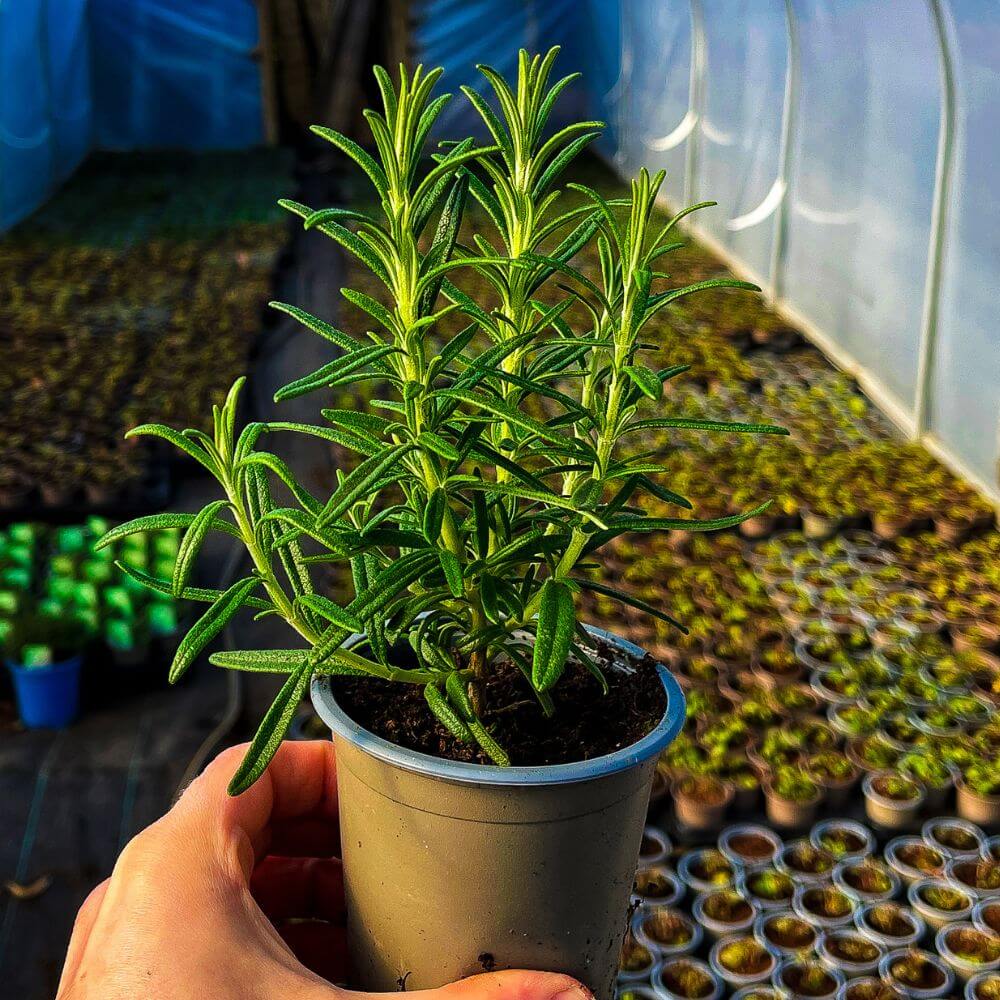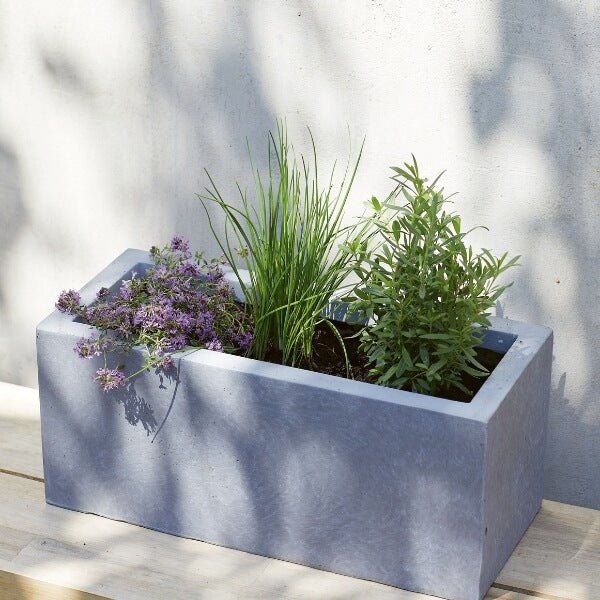How to make a herb garden
It can be daunting when you begin your growing journey and take your first steps towards creating a beautiful herb garden. Perhaps you are starting from the beginning, working with a blank canvas and looking to fill your herb garden with beautiful evergreen herbs that will inspire foodie creations throughout the year. It’s also possible that you are looking to reinvigorate a tired growing space, to rebuild your herb garden, adding herbs for bees and hardy herbs that you can use throughout the year.

Planning your herb garden
We always suggest planning your herb garden based on the following principles:
The value of the herbs that you will be growing.
This doesn’t just mean the monetary value of the herb plants that you have growing within your herb garden, although the financial impact of these plants and the money that they can save you should also be considered. Growing relatively expensive ingredients such as French Tarragon or Vietnamese Coriander can certainly save you money throughout the course of a full growing season.
But the value of the herb plants that you grow within your herb garden should also be considered in terms of their value to you – to your quality of life. They should make you feel good and add texture to your growing space. This should be a space that benefits you and makes you feel amazing.
Wellbeing
We are big advocates of mental health and the benefits that these amazing herb plants can bring to your mental wellbeing. In building a herb garden, you are creating a space that can be a refuge for you. A space where you can prioritise ‘you’, which provides a sensory recharge.
You should think about filling your herb garden with aromas and textures that speak to you personally.

Smile generation
There is such a huge range of expert advice that can be found about garden design in general and herb garden design in particular. So much of this advice is helpful and inspiring, but ultimately it’s really important to remember that yours is the only opinion that matters as you develop your growing space and make your herb garden.
Your objective should principally be smile generation. If it makes you smile then it’s a huge success.
Realism
This is a tough one to write. We are herb geeks here at Urban Herbs, who get hugely excited by the unusual varieties that we grow and stock. But it’s important to be realistic and consider how much time you will be able to devote to your herb garden. Consider growing amazing evergreen, hardy varieties such as Lemon Curd Thyme, Orange Thyme, BBQ Rosemary or Winter Savory, all of which will be very low maintenance and require little attention from yourself.
As you continue to build your herb garden you can expand as your confidence grows.
You can also find more information regarding design principles around a herb garden in our fortnightly herb growing workshops, which are included free with any Herb Club membership. Find out more here.
How to make a herb garden: how to get started
(More information regarding these projects can be found in The Herb Gardening Handbook)

Pallet Planter Herb Garden
This is a really fun project that can be easily achieved using an old pallet. Planting areas can be created between the slats of the pallet at each level and lined using either an old compost bag or landscape fabric. Herbs can then be planted on each level and provide a really attractive and space saving option to add to your growing space.
The pallet can also be decorated to your own taste.

Herbs in a hanging basket
This is another great space-saving option to grow your own herbs. Growing herbs in a hanging basket has many advantages, as your herbs can be grown conveniently and in flexible locations. You just need something to hang your hanging basket from. Low growing varieties are particularly suited to growing in a hanging basket although larger varieties can live in the hanging basket for a short period of time before being potted on into a larger container.
This also has the added bonus that it moves your herbs away from potential issues with animals disturbing your plants.

Bee Buffet
What is a bee buffet? In the Herb Growing Handbook, Andrew expands more on this, but essentially a bee buffet is planting specifically designed to cater for the needs of bees throughout the season. You are providing a ‘starter’ of herbs in flower during early spring, a ‘main course’ of flowering Thyme plants during the summer months and a ‘dessert’ of late summer/ autumn flowering lavender plants, to provide late season food for bees.

Windowsill Herb Garden
Some of the most beautiful herb gardens that we have seen have been windowsill based and this provides a really convenient way of growing herbs for use in the kitchen. There are many varieties such as Basil or Coriander that will prefer growing behind glass and the windowsill will provide a happy home for these herbs. Growing herbs indoors really doesn’t have to be a ‘second best option’ to growing outdoors – this is something we are really passionate about as many of our customers don’t actually have the option to grow outside but have still developed gorgeous indoors herb gardens.
There are so many aspects to consider when making a herb garden, but the planning stage is so important. We feel that inspiration is important too and we really hope that you have enjoyed us sharing these thoughts with you. Over the coming weeks we will be sharing more growing tips through these weekly blogs, our newsletter, Instagram feed, Facebook feed, YouTube channel and of course exclusive content and workshops through the Herb Club.




